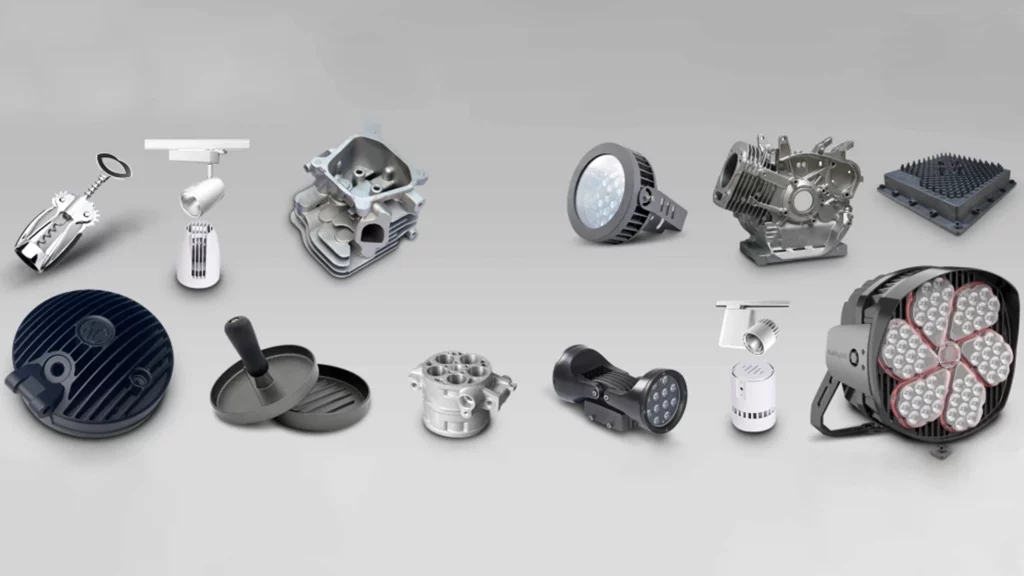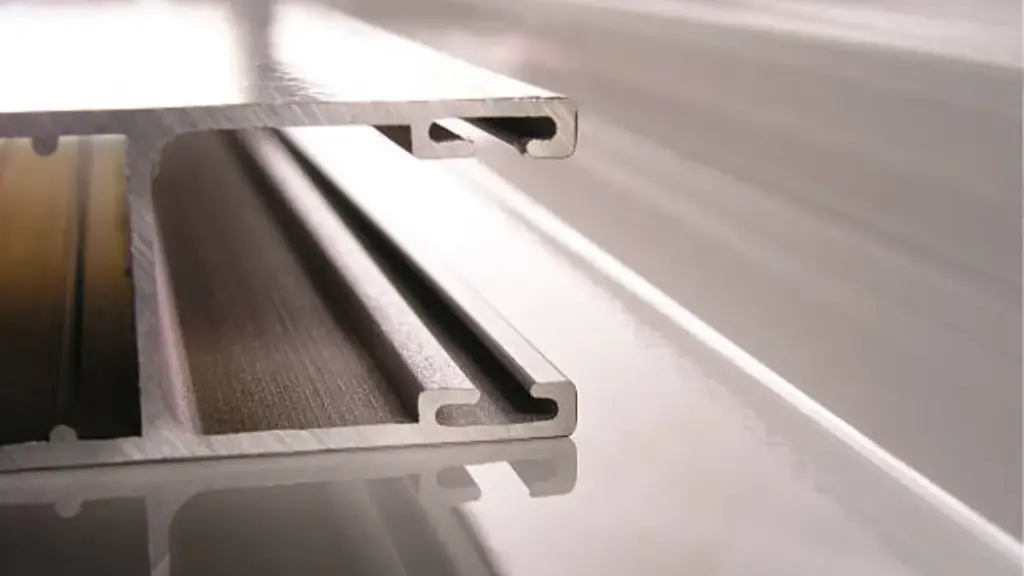Se você já se maravilhou com os complexos detalhes dos componentes do motor de um carro ou a sensação robusta de um acessório decorativo, Você pode ter um lançamento de zinco para agradecer. Este processo, Embora muitas vezes ofuscados por sua contraparte de alumínio, é uma pedra angular na fabricação. Mas o que exatamente é o elenco de zinco, E por que você deveria se importar? Vamos mergulhar e explorar este mundo fascinante.
O que é o elenco de zinco?

A fundição do zinco é um processo de fabricação em que o zinco fundido é injetado em um molde para criar peças de metal precisas e complexas. Este método é favorecido por sua capacidade de produzir altos volumes de peças idênticas com tolerâncias apertadas e excelentes acabamentos de superfície. É como assar um bolo, Mas em vez de bater, você tem metal fundido, E em vez de um bolo, você fica durável, Componentes metálicos detalhados.
O processo de fundição do zinco
O processo de liga de zinco, o elenco é bastante metódico, envolvendo várias etapas importantes para garantir que o produto final atenda aos padrões rigorosos de qualidade.

Etapa #1: Fusão e injeção
Primeiro, lingotes de liga de zinco são derretidos em um forno até que eles se tornem um líquido ao redor 800 graus Fahrenheit. Este zinco fundido é então injetado sob alta pressão em um molde de aço, conhecido como um dado. Imagine uma seringa gigante empurrando metal em um molde com precisão e velocidade.
Etapa #2: Resfriamento e Solidificação
Uma vez que o zinco fundido enche o molde, É permitido esfriar e solidificar. Esta etapa é crucial, pois determina a forma final e a integridade estrutural da parte do elenco. Pense nisso como deixar seu bolo esfriar antes de tirá -lo da panela para evitar desmoronar.
Etapa #3: Ejeção e corte
Depois que a parte esfriou, É expulso do dado. No entanto, ainda não está pronto. O próximo passo envolve aparar qualquer excesso de material, conhecido como flash, para garantir que a peça atenda às especificações desejadas. Isso é semelhante a congelar seu bolo, Certificando -se de que parece tão bom quanto o gosto.
Ligas populares de zinco no elenco
O elenco de zinco não é um processo único. Ligas diferentes são usadas dependendo do aplicativo, com cada oferecendo propriedades únicas.
Ligas de zamak
As ligas de Zamak estão entre as mais usadas no elenco de zinco, apreciado por sua força e versatilidade.
- Cargas 3: Cargas 3 é o cavalo de batalha das ligas de zinco. Oferece um ótimo equilíbrio de força, ductilidade, e resistência ao impacto, tornando -o adequado para uma ampla gama de aplicações.
- Cargas 5: Para aplicações que exigem maior dureza e força, Cargas 5 é a escolha preferida. Tem conteúdo de cobre um pouco mais alto, aprimorando suas propriedades mecânicas.
- Cargas 2: Cargas 2 é conhecido por sua força e dureza excepcionais, Embora seja menos dúctil do que outras ligas Zamak. É ideal para peças que precisam suportar desgaste pesado.
Ligas za
Ligas za (Alumínio de zinco) são outra categoria, oferecendo um conjunto diferente de características.
- Para 8: O ZA-8 é conhecido por suas excelentes características e força de elenco, tornando -o ideal para menor, partes mais complexas.
- Para 12: Com um maior teor de alumínio, ZA-12 oferece dureza superior e resistência ao desgaste, Adequado para componentes expostos ao atrito.
- ZA-27: ZA-27 possui a maior resistência e menor densidade de todas as ligas de zinco, tornando -o perfeito para peças que precisam ser fortes e leves.
Vantagens do elenco de zinco
Por que escolher o lançamento de morrer de zinco em vez de outros métodos? Aqui estão alguns motivos atraentes:
Alta eficiência de produção
O processo de fundição do dado, Especialmente elenco de zinco, permite uma produção de alta velocidade e grande volume. Máquinas de fundição de matrizes de câmara quente podem atingir uma média de 400 para 900 peças fundidas por hora, aumentando significativamente a eficiência da produção.
Alta precisão dimensional
Castings de matrizes exibem alta precisão dimensional, Normalmente alcançando tolerâncias de IT13 para IT15 de acordo com GB 1800-2009, E em alguns casos, Até até It11 para It11. Isso permite que as peças fundidas para atender às demandas de componentes de precisão.
Excelente qualidade de superfície
As peças fundidas possuem uma alta qualidade da superfície, com valores de rugosidade da superfície que variam de Ra 3.2 para 1.6 μm, e alcançar localmente RA 0.8 μm. Esta superfície de alta qualidade reduz a necessidade de processamento subsequente, redução dos custos.
Capacidade de lançar peças complexas de paredes finas
Castões de zinco podem ter formas de peça complexas, mantendo espessuras finas de parede, Com a espessura mínima da parede de peças fundidas de liga de zinco alcançando 0.3 milímetros.
Boas propriedades mecânicas
Metal derrete esfriar rapidamente no molde de fundição sob pressão, resultando em uma estrutura de grão fino e densa perto da superfície. Isso dá a fundições de mortos mais força e dureza.
Desvantagens do elenco de zinco
Nenhum processo é perfeito. Casting de zinco tem suas desvantagens:
Altos custos de equipamento
O custo do equipamento de fundição e moldes é alto, Aumentando o custo de investimento inicial. Portanto, A fundição é geralmente adequada para a produção em massa de grandes quantidades de produtos.
Suscetibilidade à porosidade do gás
Devido à velocidade muito alta em que o metal derrete enche a cavidade do molde durante a fundição, e a não permeabilidade dos materiais de mofo, Caixas fundidas produzidas usando métodos tradicionais de fundição são propensos à porosidade do gás. Isso pode afetar a força e o desempenho das peças fundidas.
Requisitos de molde alto
O projeto e a fabricação de moldes requerem alta precisão e qualidade para garantir a precisão dimensional e a qualidade da superfície das peças fundidas. Isso aumenta o custo e a dificuldade da fabricação de moldes.
Altos requisitos de matéria -prima
A fundição tem altos requisitos para a composição de pureza e liga de matérias -primas. Matérias -primas inadequadas podem levar a defeitos ou degradação do desempenho em peças fundidas.
Pós-processamento complexo
Enquanto as peças fundidas têm uma boa qualidade da superfície, Eles ainda podem exigir processamento subsequente, como moer, polimento, ou revestimento em determinadas aplicações para melhorar ainda mais seu desempenho ou aparência.
Aplicações de peças de zinco fundidas
O elenco de zinco é usado em várias indústrias, Graças à sua versatilidade e força.
Indústria Automotiva
As partes do elenco de zinco são essenciais no indústria automotiva.
- Componentes do motor: Peças como bombas de combustível e carburadores se beneficiam da precisão e durabilidade do Zinc Die Casting.
- Peças internas e externas: De maçanetas de porta a acabamentos complexos, Peças fundidas de zinco Adicionar função e talento aos veículos.
Componentes eletrônicos e elétricos
O elenco de zinco garante durabilidade e confiabilidade para o peças eletrônicas.
- Habitação para dispositivos eletrônicos: Forte, Casas duráveis para dispositivos protegem componentes internos delicados.
- Conectores e terminais: A condutividade e a força do zinco o tornam ideal para conectores elétricos e terminais.
Bens de consumo
Em nossa vida cotidiana, Casting de zinco aparece em inúmeros itens.
- Alças e hardware: Pense na sensação sólida de uma alça de gaveta ou na robustez de uma trava de porta - graças ao lançamento de zinco para isso.
- Acessórios decorativos: De bases elegantes de lâmpadas a quadros de imagem ornamentados, As peças de zinco do fundido são lindas e funcionais.
Zinco versus. Fundição sob pressão de alumínio
Quando se trata de morrer de elenco, Casting de zinco e alumínio Cada um tem seus pontos fortes.

Pontos fortes e fracos
O zinco é mais forte que o alumínio? Sim, O zinco é mais forte e mais durável, mas mais pesado. O alumínio é mais leve e oferece melhor resistência à corrosão, mas não é tão forte.
Aplicações ideais para cada
As ligas de zinco são adequadas para peças que precisam de força e durabilidade. Fatos de alumínio para componentes onde a economia de peso e a resistência à corrosão são fundamentais.
Conclusão
O elenco de zinco é um processo de fabricação fascinante e vital, oferecendo precisão incomparável, força, e versatilidade. De componentes automotivos a bens de consumo, Suas aplicações são vastas e variadas. Enquanto tem suas desvantagens, Os benefícios geralmente superam os negativos, Fazendo de zinco morrer lançando uma escolha para muitas indústrias. Ao procurar por componentes de fundição de zinco de alta qualidade, você pode colaborar com Fabricantes de peças de fundição de liga de zinco que oferecem precisão, durabilidade, e soluções econômicas para várias aplicações industriais.
Perguntas frequentes
1. Qual é a principal vantagem do lançamento de morrer de zinco sobre outros métodos?
Casting de zinco oferece precisão superior e a capacidade de criar geometrias complexas, tornando-o ideal para produção detalhada e de alto volume.
2. São as peças de zinco do molde reciclável?
Sim, As peças de zinco do fundido são totalmente recicláveis, Tornando esse processo ecológico.
3. Como a fundição de mortes de zinco se compara à moldagem por injeção de plástico?
Enquanto a moldagem por injeção plástica é mais clara e mais barata para algumas aplicações, O elenco de zinco fornece maior força, durabilidade, e estabilidade térmica.
4. As peças de zinco podem ser pintadas ou revestidas?
Absolutamente! As peças fundidas de zinco podem ser facilmente pintadas ou banhadas para estética aprimorada e resistência adicional à corrosão.
5. O que as indústrias mais se beneficiam do elenco de zinco?
O automotivo, eletrônicos, E as indústrias de bens de consumo são alguns dos maiores beneficiários do elenco de zinco, Graças à sua precisão, força, e custo-benefício.
6. Qual metal é usado com mais frequência no processo de fundição?
O alumínio é o metal mais usado no processo de fundição, favorecido por seu leve peso, resistência à corrosão, e versatilidade em várias indústrias.


















